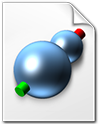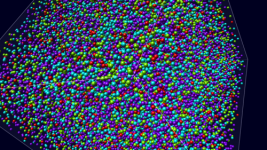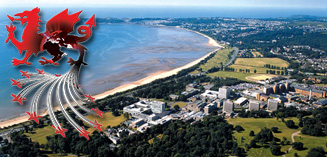As promised, here my impressions on this year’s EuroVis conference in Swansea, Wales.
First about the location: Wales offers beautiful landscapes and literally shined with perfect weather during the week of the conference. Several locals assured me that this much sunshine and this little rain was not normal. It’s fine with me. I enjoyed it. I booked a family-managed bed & breakfast. That was a good idea. The room was clean and well furnished. For sure that B&B was not a top-tier accommodation, whatever that means, but my hosts were very nice and I got the feeling, that I was welcome. The only downside was traveling to Swansea, which seems to be far far away. When booking my travel someone did not pay attention to traveling comfort. Thus, I spent one Sunday and the next Saturday in one tram, two trains, two airplanes, one bus, two (delayed) British trains, and one taxi, each. I have no problem with long travels, but changing vehicles eight times is a pain.
Now for the conference itself. It was held at the University of Swansea in four rooms in three different buildings. Due to the large number of visitors, it might have been necessary, however it was tiresome.
Before the main conference, there were several smaller workshops. Although I was part of the program committee of the EnvirVis 2014, a workshop on “Visualization in Environmental Sciences”, I visited most session of the EGPGV, the Eurographics Working Group on Parallel Graphics and Visualization. “Big Data” is one of the major buzzwords in scientific visualization at the moments. Therefore, some of the talks were very interesting, especially the key note given by Valerio Pascucci. The other talks were good quality. For example, one nice idea, although not completely new, was the work “Freeprocessing Transparent In Situ Visualization Via Data Interception” by Thomas Fogal et al.. Preloading for the win. :-) But the approach is good and can be useful.
There was much to see on the main conference. As always, the talks were of good quality. If I write it like this, I mean that these talks were not ground breaking, but that they were good to listen to and to follow. The large conferences always claim to have a higher quality than smaller workshops. In my opinion it is more like that percentage of good papers is higher, like 95% on the large conferences, while smaller workshops have a ratio of 2/3 to 1/3 of good papers and … others. But the quality of the good talks is not different between the large conferences and the smaller workshops. Two talks I liked especially were „Fast RBF Volume Ray Casting on Multicore and Many-Core CPUs“ by Arron Knoll et al. and „Sparse Representation and Visualization for Direct Numerical Simulation of Premixed Combution“ by Timo Oster et al.. The capstone talk by John Stasko also was very entertaining.
The real highlight of this year’s EuroVis, however, were the STAR-Tracks. STARs are State of the Art reports. These are overview reports over a limit sub-field of our science. Good STARs are invaluable and are a perfect starting point to enter a field. This EuroVis gave out a call for STARs for the first time and highlighted them with their own session track. Great! Because of this, some very good STARs were written and presented. I am really pleased. I especially liked “A Review of Temporal Data Visualizations Based on Space-Time Cube Operations” by Benjamin Bach et al.. Not only were the work itself and the presentation of good quality, but during the presentation a lively and constructive discussion emerged with several people from the audience. Many nice ideas were created.
In short, the EuroVis 2014 was interesting and worth the effort. I am satisfied.









